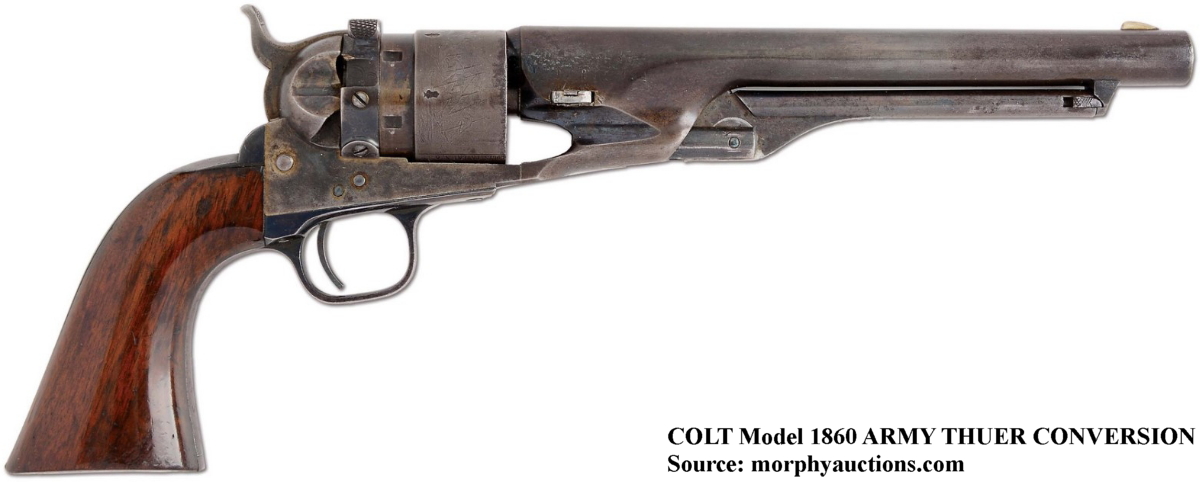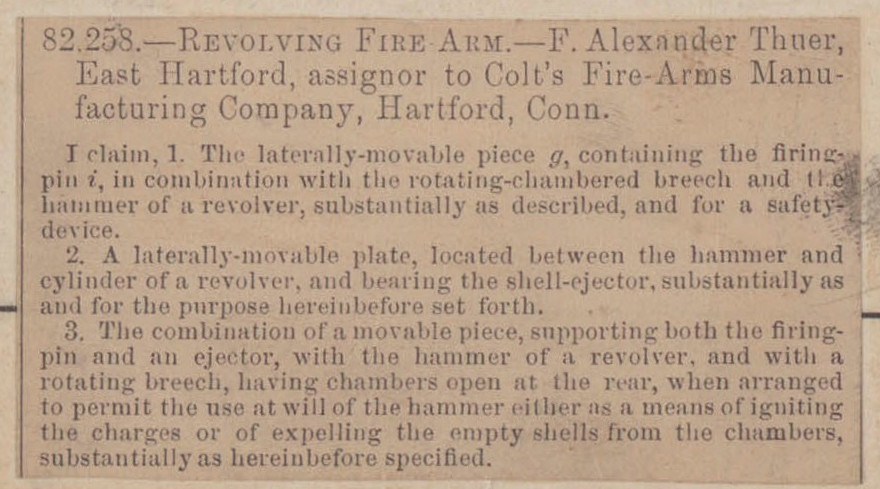There were two developments that were the sliced bread version of handgun design. The first was the self-contained metallic cartridge and the second was the bored-through cylinder that enabled cartridges to be loaded from the rear of the cylinder. Swiss gunsmith Jean Samuel Pauly in association with French gunsmith François Prélat were the first to develop an integrated cartridge type design in 1808. Next came French gunsmith Casimir Lefaucheux in 1836 with his pinfire design, the earliest efficient, modern cartridge case design. Next in line was again a Frenchman by the name of Louis-Nicolas Flobert who invented the first rimfire metallic cartridge in 1845. His design consisted of a percussion cap with a loaded with a round bullet. Another Frenchman, Benjamin Houllier further improved on the Lefaucheux design in 1846. The Flobert design gave rise to the development of the .22 Short in 1857, which was the earliest self-contained rimfire cartridge design in the U.S. and chambered in the S&W Model 1 revolver.
Enter a man named Rollin White. A Colt employee at the time, he started in 1849 to experiment with condemned parts from old percussion revolvers to improve the design of the cylinder. He patented his design in 1855 but Colt refused to licence it to him. The Colt patent on the cap-and-ball revolver was only expiring in 1856 and Colt saw the new design as a novelty only. White then took his idea to Smith & Wesson and they reached an agreement and that gave Smith & Wesson a virtual monopoly on revolver manufacture in the US until the patent expired. Although not the focus here, the Rollin White story does make for interesting reading.
Colt, once the undisputed leader of the revolver manufacturing industry in America was struggling to regain prominence while waiting for the Rollin White patent to expire. They tried their own circumvention of the monopoly by Smith & Wesson by converting their percussion revolvers to a tapered, front-loading metallic cartridge design patented by Colt employee, Alexander Thuer in September 1868, and although being the first reloadable, center-fire metallic cartridge with integral primer, the idea was impractical and difficult to use, leading to only about 5,000 of these conversions being done. The White patent in any case expired in April of 1869 and he was refused a patent extension in 1870, paving the way again for all manufacturers to use the design as we know today. (Erlmeier, Brandt Ref. 417)





